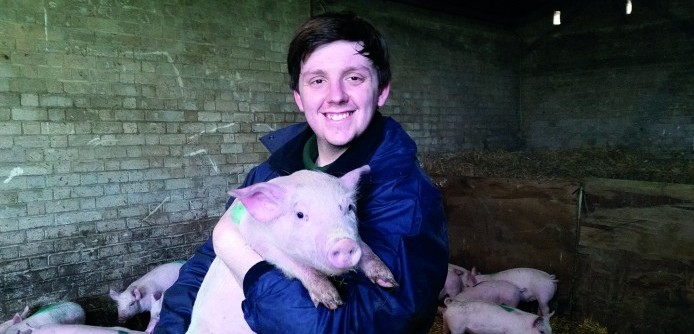In the latest Veterinary View column, Andrew Prince, who has been working at the Garth Pig Practice for just over a year, explains why he is expecting a greater focus on vaccination in 2021 and beyond.
With a COVID-19 vaccine now already in use in the UK, 2021 will be the year of the vaccine. Mass vaccination of a population with the aim of improving health, welfare and the economy – if only we’d thought of that first!
Many of us in the pig industry (and our feathered colleagues) have looked on this week as conversations we would normally have ‘in-house’ about efficacy, duration of immunity, the logistics of administering thousands of doses etc. become mainstream. And while we await further COVID vaccine developments, perhaps this is a good time to reflect on those vaccination schemes that we use and have control of.
With a few notable exceptions, there are a number of ‘off-the-shelf’ vaccines now available in the UK for the major diseases of swine and we also have the capability of providing pathogen specific autogenous vaccines.
So, that’s pretty much problem solved, right? We identify a disease; we bung in a vaccine and the disease goes away.
Well, sort of. In my first year of being the pig intern at Garth Pig Practice, if one thing has become clear to me it’s that pigs (and diseases) don’t read the fine print. With vaccines you really need to check the terms and conditions first.
The pathogen involved and how it’s presented to the pig’s immune system largely dictate the outcome of vaccination – reduced shedding of pathogens, reduction in the severity and duration of clinical signs, prevention of disease are just some of the outcomes we see with vaccination.
This is why it’s so important to understand what vaccines you are using and why. Investing in a vaccination program is not just limited to spending money on bottles, it’s about understanding what outcomes define success for you and your unit, and how willing you are to meet the vaccine halfway in order to achieve those outcomes.
As Boris and Co are currently finding out, the core components of any new vaccination programme require some key information. What’s the onset of immunity, ie the length of time between vaccination and the ability to mount an immune response? What’s the duration of immunity, ie how long the immune system ‘remembers’ how to deal with the pathogen (in practical terms, how long before a booster is needed)? And how do you administer the thing?!
The most promising COVID vaccines to date are RNA vaccines – a new type of vaccine which works by introducing messenger RNA which directs the body’s cells to build specific antigens, eg in the case of COVID-19, the specific spike antigen found on the surface of the virus, the immune system then develops its own antibodies to this antigen and retains the memory of how to do so in the event that it encounters the actual virus.
With the focus of the worldwide vaccine community turned towards developing RNA vaccines – it gives me hope that some of the benefits of that research and funding will trickle into the pig industry.
RNA vaccines are potentially faster and cheaper to produce than conventional vaccines (which use a modified piece of pathogen to stimulate an immune response) and allow for greater flexibility to adapt to change in the pathogens – this would be a game changer for ‘flu and PRRS vaccines.
My first year as a pig vet has been like no other but it has made me very hopeful for the developments in vaccine technology that are to come – 2021 might be the year of the vaccine, but the 2020s are going to be the decade of the most rapid advancements in vaccine technology yet. And I can’t wait.




